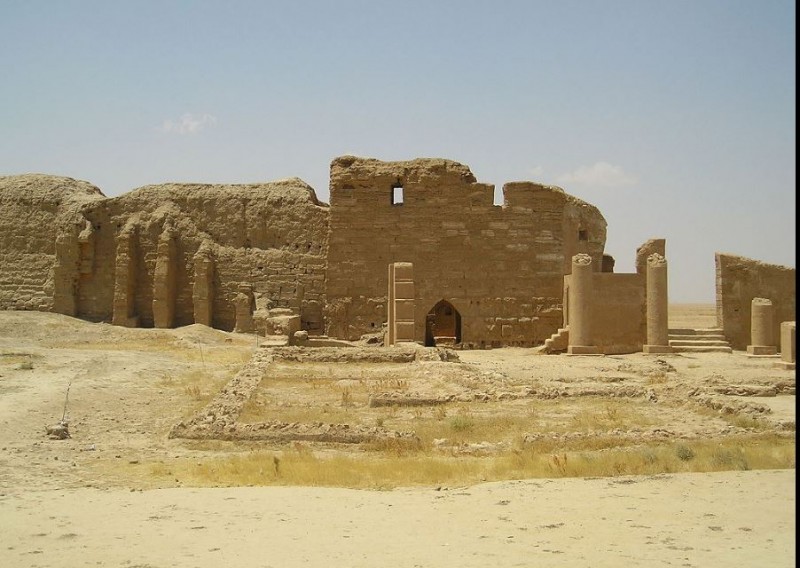
The Dura-Europos Church is an archaeological treasure that offers a fascinating glimpse into the early history of Christianity. Located in the ancient city of Dura-Europos, situated on the banks of the Euphrates River in modern-day Syria, this church stands as a testament to the enduring faith of the early Christian community during a turbulent era of history. Discovered in the early 20th century, its excavation and subsequent studies have provided valuable insights into the religious and cultural landscape of the region during the 3rd century.
The city of Dura-Europos was established as a Greek military colony in the 3rd century BCE and later came under the control of the Parthians, before being captured by the Romans in 165 CE. Its strategic location along a major trade route made it a bustling and diverse city with a mix of cultures and religions, including Christianity, Judaism, Zoroastrianism, and others. The Dura-Europos Church was built during the Roman period, between the years 230 and 256 CE.
Also Read: Skiathos, Greece: A Paradise in the Aegean Sea
The discovery of the Dura-Europos Church was the result of an extraordinary series of events. In 1920, during the First World War, British troops stationed in the region inadvertently stumbled upon the site while digging trenches. Their chance discovery led to the formal excavation of the ancient city under the direction of archaeologist Franz Cumont, revealing not only the church but also a well-preserved synagogue and other remarkable structures.
The Dura-Europos Church is a modest structure in comparison to grand cathedrals of later centuries. It follows the basilica plan, a common design for early Christian churches, comprising a rectangular nave with side aisles. The church's dimensions are approximately 27 meters in length and 13 meters in width. The east end features a semi-circular apse, typically reserved for the clergy, while the west end had a baptistry, indicating its significance in the early Christian sacraments.
Also Read: Tianjin: A Vibrant Metropolis Blending History and Modernity
The interior of the church is adorned with a series of magnificent frescoes, which makes it one of the earliest known Christian buildings to display such artwork. The frescoes depict various religious scenes, including biblical narratives such as the Good Shepherd, the Healing of the Paralytic, and scenes from the Old Testament. The use of images in early Christian art was significant, as it helped convey religious stories and teachings to an audience that might have been largely illiterate.
One of the most intriguing aspects of the Dura-Europos Church is the coexistence of multiple religious traditions within the city. Adjacent to the church, the presence of a synagogue with well-preserved paintings depicting scenes from the Hebrew Bible highlights the cultural and religious syncretism in Dura-Europos. This intermingling of beliefs and traditions is a testament to the complexity of religious life during this period and showcases the religious tolerance that was practiced within the city.
Also Read: Naxos, Greece: The Jewel of Cyclades
The Dura-Europos Church was only in use for a short period. The city experienced a series of attacks from various forces, including the Sassanian Persians, and it eventually fell to them in 256 CE. The city was abandoned and eventually buried under layers of sand, which remarkably contributed to its preservation over the centuries.
The Dura-Europos Church holds immense significance as one of the earliest known Christian places of worship. Its discovery and excavation have provided scholars with valuable information about the development of early Christian architecture and art, shedding light on the transition from underground worship in catacombs to more public structures. It also showcases the dynamic cultural and religious landscape of the ancient world and the diverse communities that coexisted within it.
Also Read: Fashion Capital of the World: London
The ongoing civil war in Syria has raised concerns about the preservation of archaeological sites like the Dura-Europos Church. Armed conflicts in the region have posed significant challenges to the safeguarding of cultural heritage. International organizations and archaeologists have been working to document and protect sites like Dura-Europos, but the situation remains precarious.
The Dura-Europos Church stands as a remarkable testament to the early history of Christianity and the complex cultural landscape of the ancient world. Its discovery has significantly enriched our understanding of early Christian architecture, art, and religious practices. As we continue to learn from and appreciate this invaluable archaeological site, we must also recognize the importance of preserving and safeguarding our shared human heritage for future generations.
Also Read: Guilin: Nature's Masterpiece in Southern China